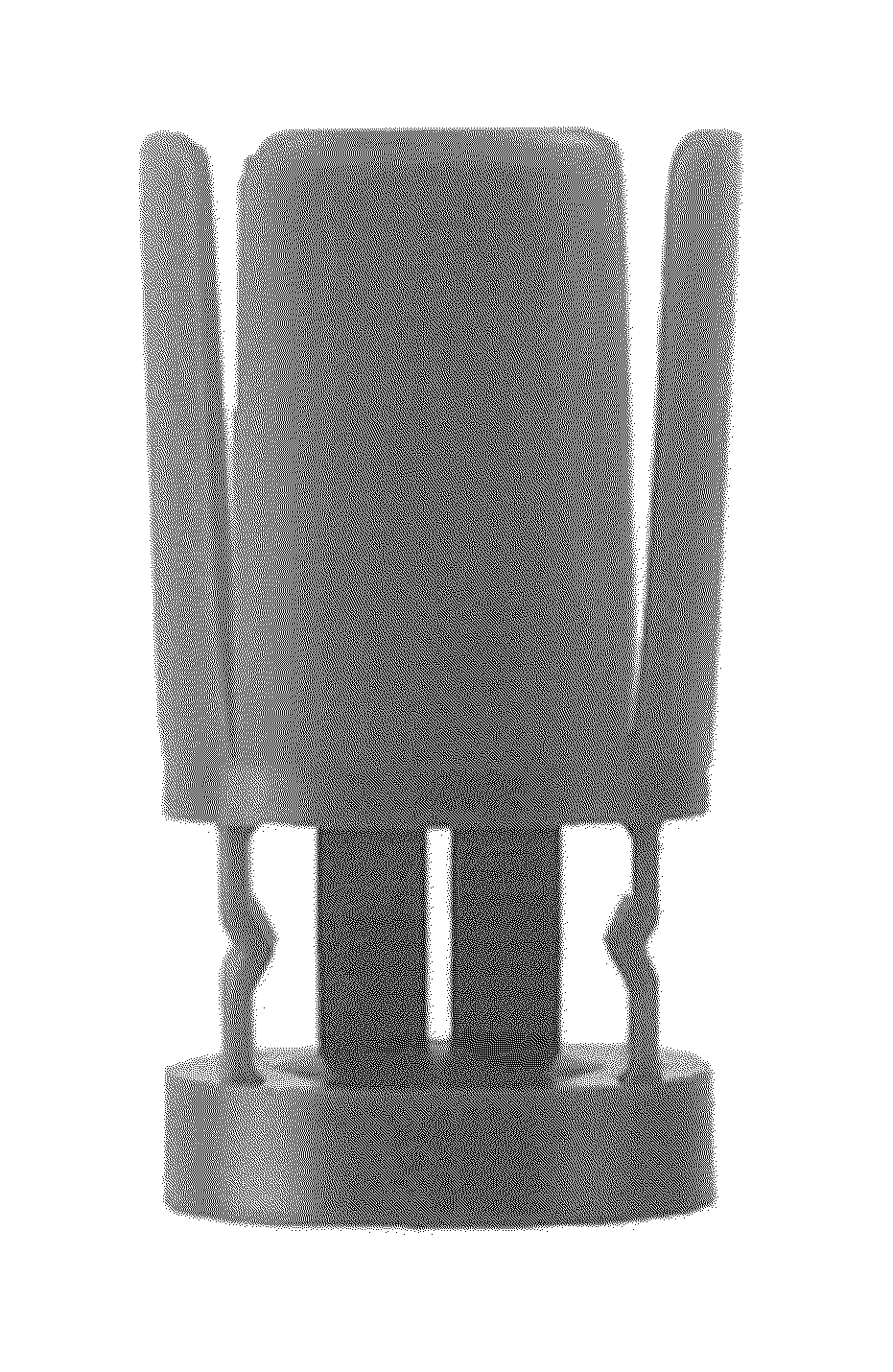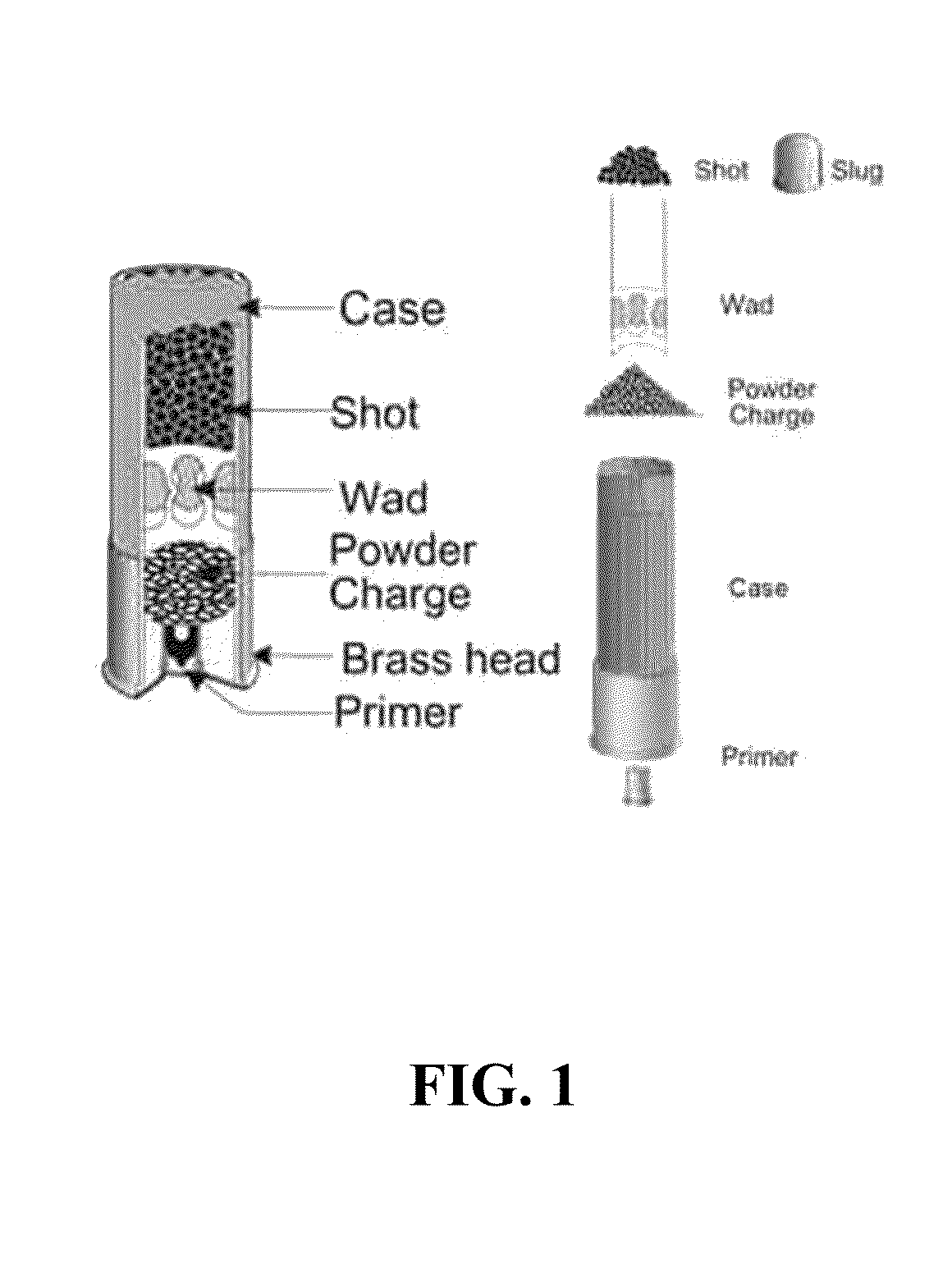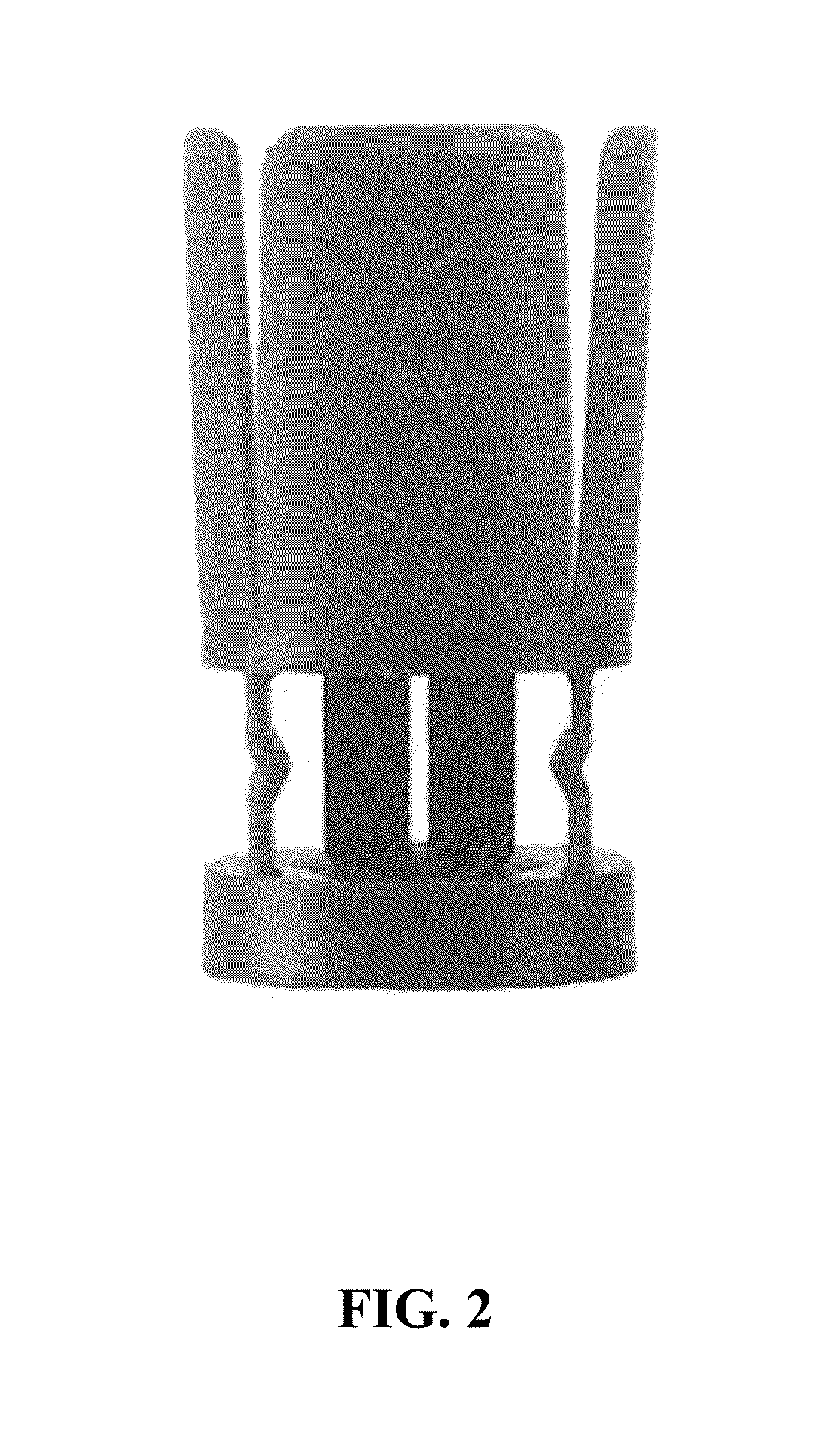Degradable shotgun wad
a shotgun and wad technology, applied in the field of degradable wads, can solve the problems of ejected wad subsequently becoming aquatic debris, affecting the quality of shotgun ammunition, and ejected wads presenting safety hazards, etc., and achieves the effects of enhancing the degradation rate, reducing the size of wad fragments, and ensuring the durability of the wad
- Summary
- Abstract
- Description
- Claims
- Application Information
AI Technical Summary
Benefits of technology
Problems solved by technology
Method used
Image
Examples
example 1
[0070]In a long term study of degradable cull panels made from PCL and PHA, degradable cull ring panels were deployed in crab traps that were either actively fished or submerged continuously. The PCL grade that was used was CAPA® 6500 (supplied by Perstorp UK Ltd., Cheshire, United Kingdom), a high molecular weight polycaprolactone that showed promise in preliminary studies. The PHA grade that was used was Mirel™P1004, a PHA formulation (including additives and mineral fillers) with high toughness that showed promise in preliminary studies, whereas some other PHA formulations were brittle and had a high failure rate when being actively fished, irrespective of the extent of degradation. Utilizing a set schedule, the degradable cull panels were removed from the water, dried, and weighed at specified times. With the polymers and designs used in this example, failure of a degradable cull panel is unlikely to occur if degradation by weight is less than 20%, but failure is very likely to ...
example 2
[0075]In a study of degradable shotgun wads, various shotgun wads were fired at a target to compare shot patterns. In this experiment, four polyethylene (PE) shotgun wads, four commercially available shotgun wads, and four polyhydroxyalkanoate (PHA) wads were fired from a shotgun mounted on a bench.
[0076]Both the PE and the PHA wads were molded by the experimenters using the same production mold.
[0077]The target was placed at 30 yards and 40 yards away from the shotgun. There was not a significant change in shot pattern based on distance to the target. The shotgun was mounted to a bench to provide consistency with the shot. Utilizing a random schedule, the wads were fired and the shot pattern was reviewed. The total shot on the target was counted. The percentage shown in FIG. 5 is the comparison between the total amount of shot within the 30″ diameter circle and the number outside the circle but still on the target.
[0078]As is apparent in FIG. 5, the PHA wads performs as well as the...
example 3
[0084]Various formulations of PHA were utilized to form shotgun wads. The wads were fired at a target to compare shot patterns. In this experiment, three degradable wads comprising Mirel™P1004 and three degradable wads comprising Mirel™P5001 were produced. Six addition wads were formed from blends of these two materials. Three wads comprising 67% by weight of Mirel™P1004 and 33% by weight of Mirel™P5001 were created. Three wads comprising 33% by weight of Mirel™P1004 and 67% by weight of Mirel™P5001 were also produced.
[0085]Utilizing a random schedule, the wads were fired and the shot pattern was analyzed. The total shot on the target was counted. The percentage shown in FIG. 6 is the comparison between the total amount of shot within the 30″ diameter circle and the total shot fired. In the examples herein 338 pellets of shot were accounted for with each firing.
[0086]As is apparent in FIG. 6, the softer PHA had improved tightness of shot pattern. For softer PHA wads, for example 100...
PUM
| Property | Measurement | Unit |
|---|---|---|
| Fraction | aaaaa | aaaaa |
| Fraction | aaaaa | aaaaa |
| Time | aaaaa | aaaaa |
Abstract
Description
Claims
Application Information
 Login to View More
Login to View More - R&D
- Intellectual Property
- Life Sciences
- Materials
- Tech Scout
- Unparalleled Data Quality
- Higher Quality Content
- 60% Fewer Hallucinations
Browse by: Latest US Patents, China's latest patents, Technical Efficacy Thesaurus, Application Domain, Technology Topic, Popular Technical Reports.
© 2025 PatSnap. All rights reserved.Legal|Privacy policy|Modern Slavery Act Transparency Statement|Sitemap|About US| Contact US: help@patsnap.com



